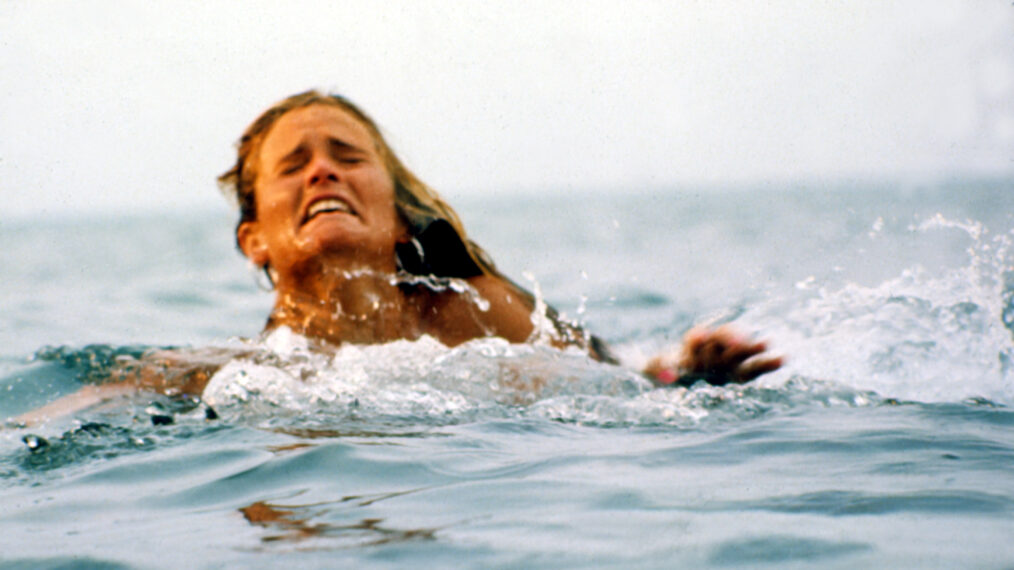The Creature (Still) Walks Among Us: A Look Back at ‘Creature From The Black Lagoon’
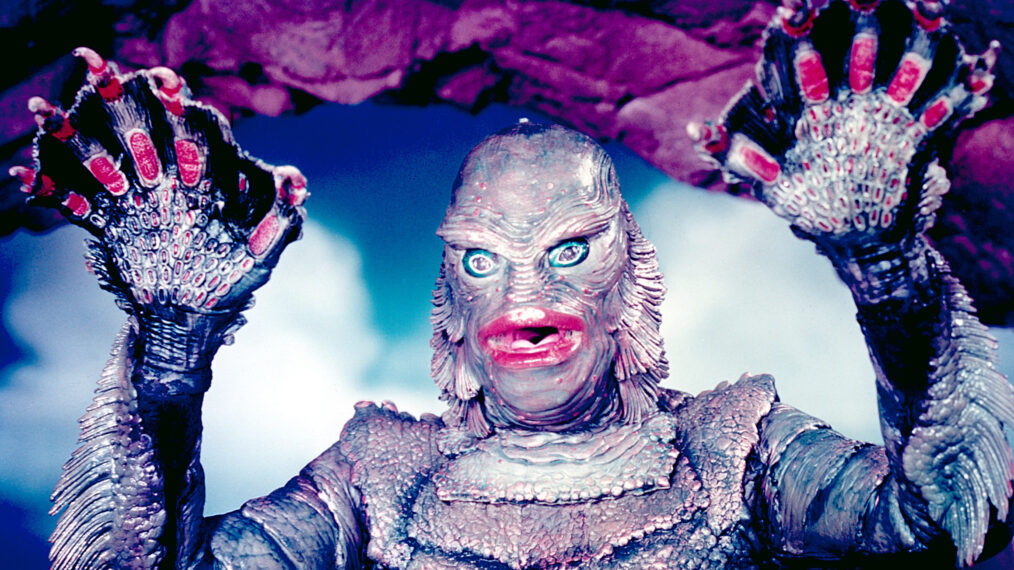
Universal Pictures’ Gill-man quietly lurked beneath the surface — watching unsuspecting visitors to his prehistoric domain deep in the murky jungle backwaters of South America in the 1954 monster movie classic Creature From the Black Lagoon. The iconic creation has also continued to stalk pop culture over the years in ways that may not have been obvious to even the most dedicated fan of the fright flick.
The Creature’s Features
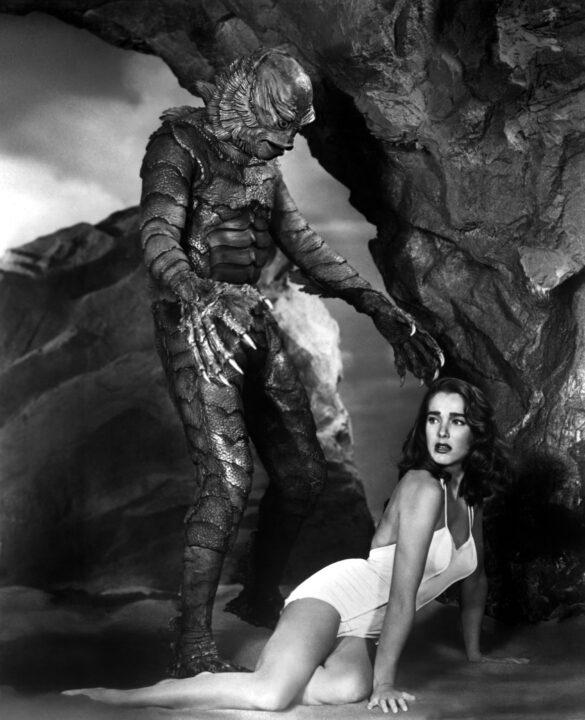
Everett Collection
Creature From the Black Lagoon was released well over a decade after Universal’s original run of horror classics. But it quickly enshrined its Creature as the last among the main pantheon of other iconic monsters from the famed studio, mentioned in the same breath as Dracula, the Mummy, Frankenstein’s monster and the Wolf Man.
While those other monstrous creations led to their portrayers — Bela Lugosi, Boris Karloff and Lon Chaney Jr. — becoming household names, the name of the actor portraying the Gill-man is not necessarily as well known. Actually, there were two different men underneath the iconic costume in the initial film — one portrayed him on land, the other in the water.
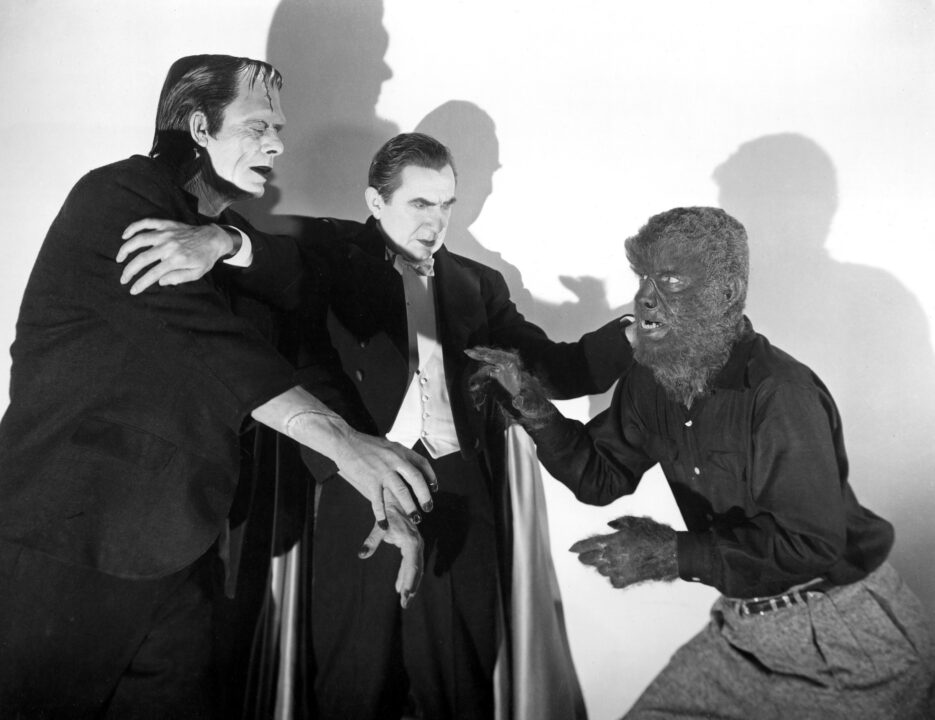
Everett Collection
In the original movie, during the land-based scenes in which the Gill-man was either pursuing Kay (Julia Adams, playing the lone female member of the crew aboard the tramp steamer Rita, often while wearing that famous white bathing suit) or attacking the male scientists and explorers, Ben Chapman wore the suit and played the monster.
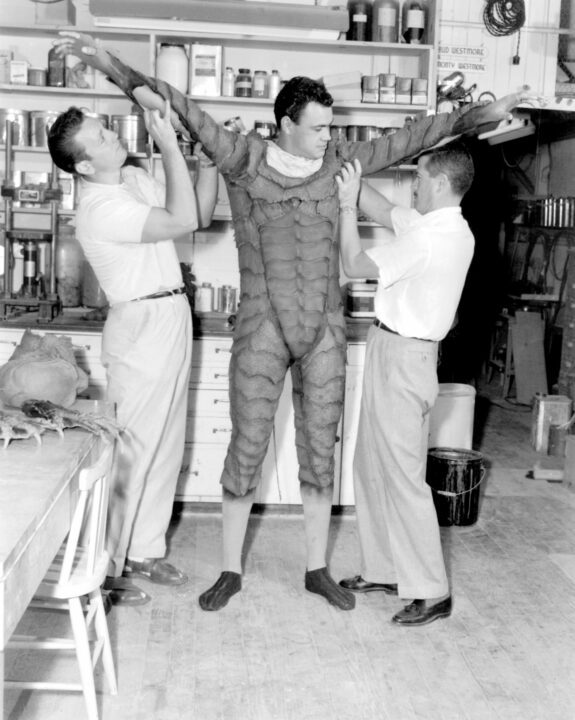
Everett Collection
Jack Kevan, right, helps Ben Chapman, center, into his Creature costume
More famously, Ricou Browning, who sadly passed away on February 27, 2023, donned the costume for those challenging underwater scenes. Browning was a stuntman, producer and underwater cinematographer. He also cowrote and produced the 1963 film Flipper and wrote for its spinoff TV series of the same name. In addition, he directed the acclaimed underwater scenes in the 1965 James Bond film Thunderball, and even did some underwater camera work for the 1980 comedy Caddyshack.

Everett Collection
Ricou Browning, on location for Flipper
Browning swam in the suit in not only the initial feature, but also in its two (frankly inferior) sequels: Revenge of the Creature (1955, probably best remembered as Clint Eastwood’s first movie) and The Creature Walks Among Us (1956). He was the only actor to play the Gill-man in all the films, as the creature on land was played by other actors in the follow-ups.
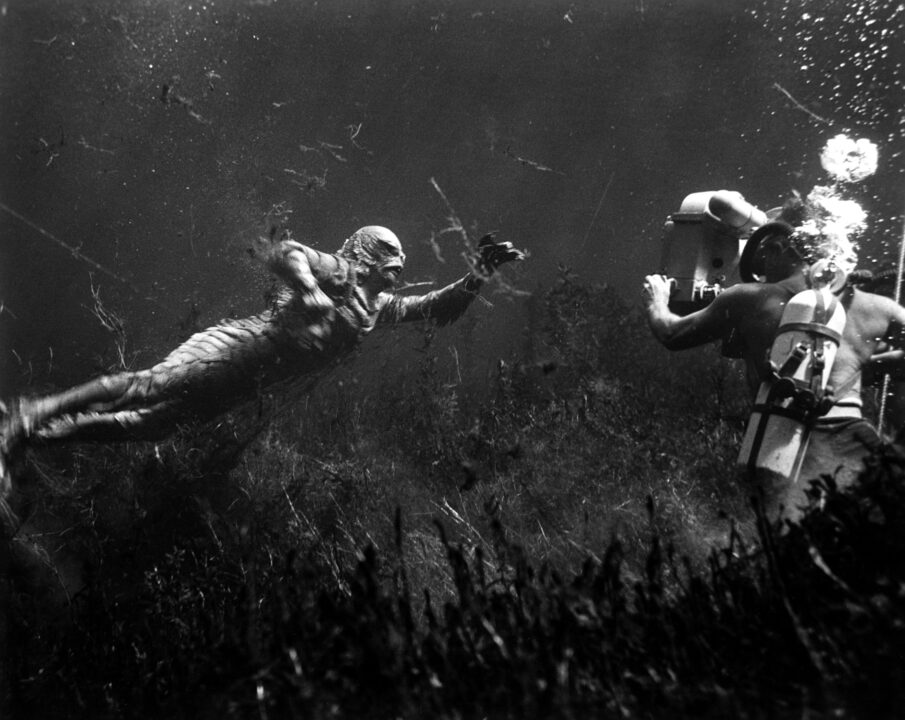
Everett Collection
Ricou Browning (on left, as ‘The Creature’), cameraman Scotty Welbourne (on right, credited as ‘Charles S. Welbourne’)
Even wearing the bulky Creature suit, Browning made the Gill-man’s swimming scenes look effortless and, honestly, graceful. Viewers could actually believe this was an amphibious “missing link” from ages past.
The scenes are enhanced by the film’s thrilling, almost overused score. It’s estimated that the tune — created by a team of composers including Henry Mancini, Herman Stein and Hans J. Salter — is heard well over 100 times in a film that runs only about 80 minutes.
According to film scholar David Schecter, the musicians had an edict from studio execs that “We want to hear the creature theme every time.” And boy, they weren’t kidding. The memorably blaring brass as the Gill-man rises from the water, or shambles toward Kay or a scientist, certainly telegraphs when the creature is around.
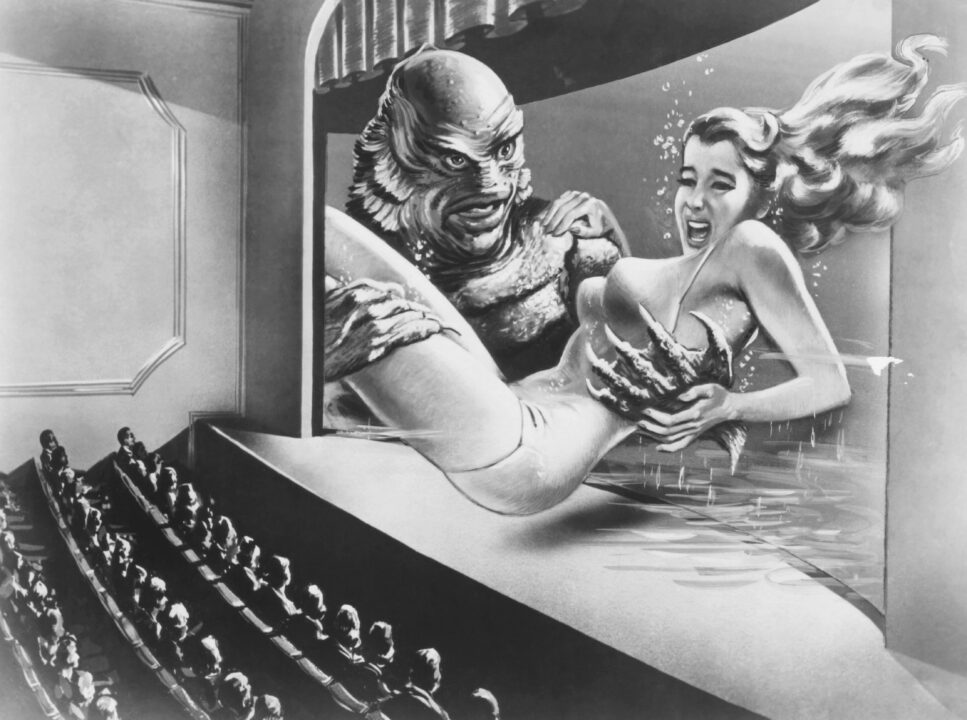
Everett Collection
Creature From the Black Lagoon originally hit theaters in a 3D, as well as a 2D, format near the end of Hollywood’s initial (but certainly not last) wave of interest in that technology in the early ’50s. Over the decades, audiences could occasionally find a classic movie house (and occasionally a TV network) that showed the film in 3D, too.
Rip-Offs
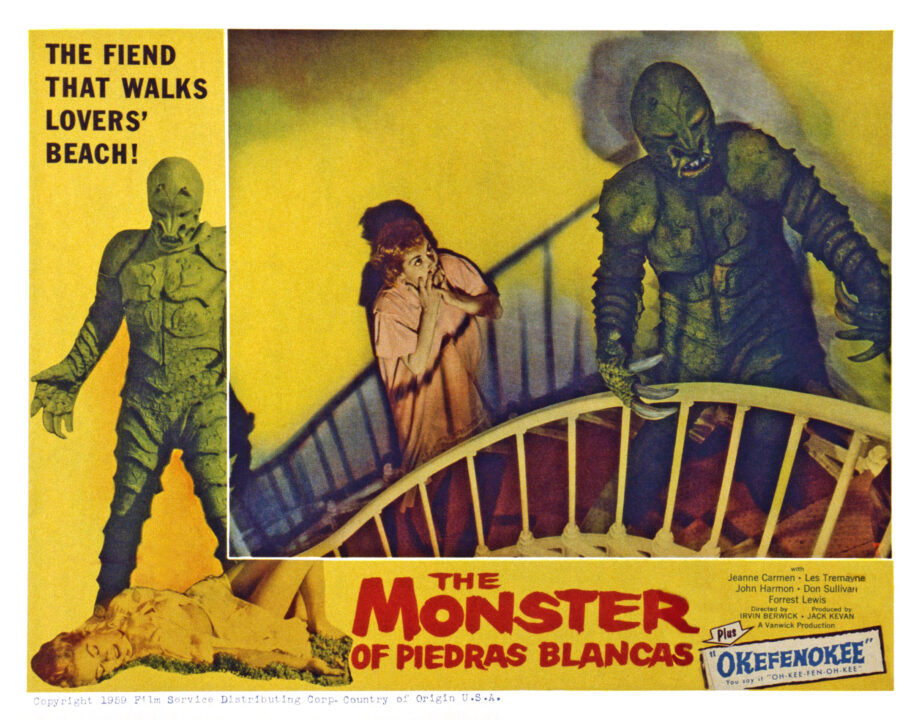
Everett Collection
A new type of monster was introduced to the movies with the amphibious Gill-man. Those filmmakers put care in designing and bringing that creation to life through a realistic costume that looked impressive on land and in the water.
The same cannot always be said of future films that swam into theaters and drive-ins following the success of Black Lagoon.
Gill-man-inspired sea monsters popped up in generally awful flicks like The Phantom From 10,000 Leagues (1955), The Monster of Piedras Blancas (1959) and The Horror of Party Beach (1964), with creature costumes sometimes being laughably bad, at least once with back zipper in full view.
A later Black Lagoon-inspired film, Roger Corman’s production Humanoids From the Deep (1980), was unpleasant viewing in a different way, upping the original film to an R-rated level and making explicit the violent and sexual subtexts.
Jaws Meets The Creature!
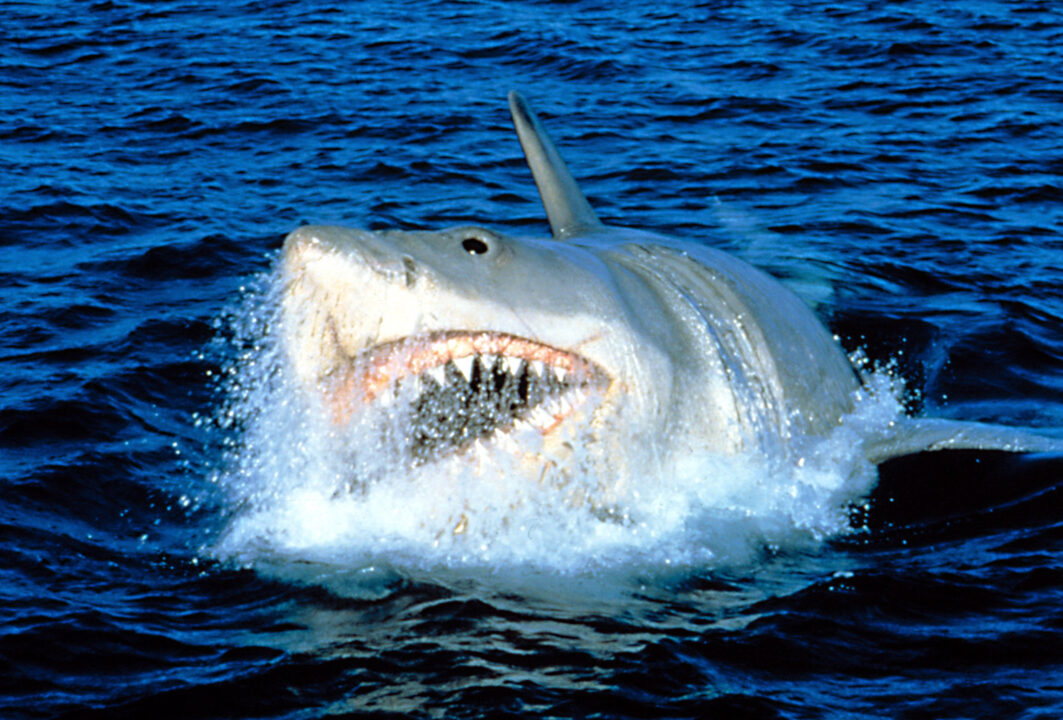
Two decades after Creature From the Black Lagoon first terrorized filmgoers, another famous monster swam into theaters — the shark in Jaws, Steven Spielberg’s legendary 1975 thriller. At least part of the impact of that film can be attributed to the influence Creature must have had on it.
Right at the start, Jaws features a directing technique that Spielberg seems to have borrowed from Jack Arnold’s 1954 movie, with both films featuring iconic sequences of their monsters lurking below while looking up at a swimming woman.
As in Creature, music plays a huge part in Jaws, telegraphing to the audience when the monster is nearby. The Gill-man was regularly accompanied by a memorable blast of brass, while the shark is forever identified with John Williams’ menacing, two-note stringed theme.
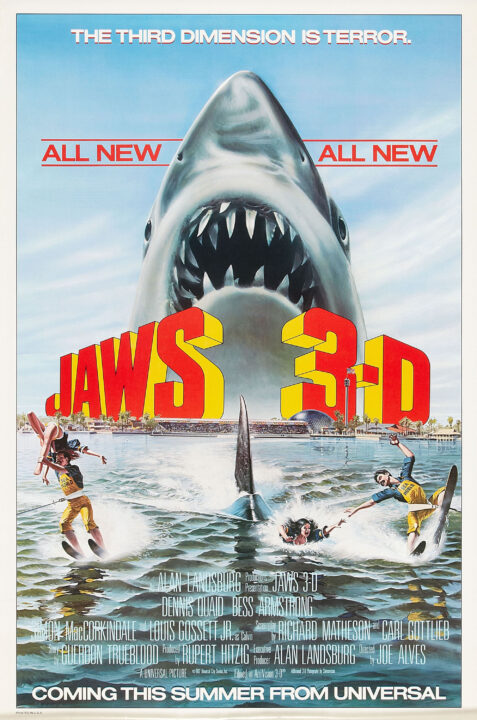
Universal/Courtesy Everett Collection
Other similarities among the film franchises exist between Creature’s first sequel, Revenge of the Creature (1955), and Jaws’ second sequel, Jaws 3 (1983). Both were initially released in 3D during periods when that trend enjoyed a revival in Hollywood. The films also have a similar premise, with each monster terrorizing a Florida marine park.
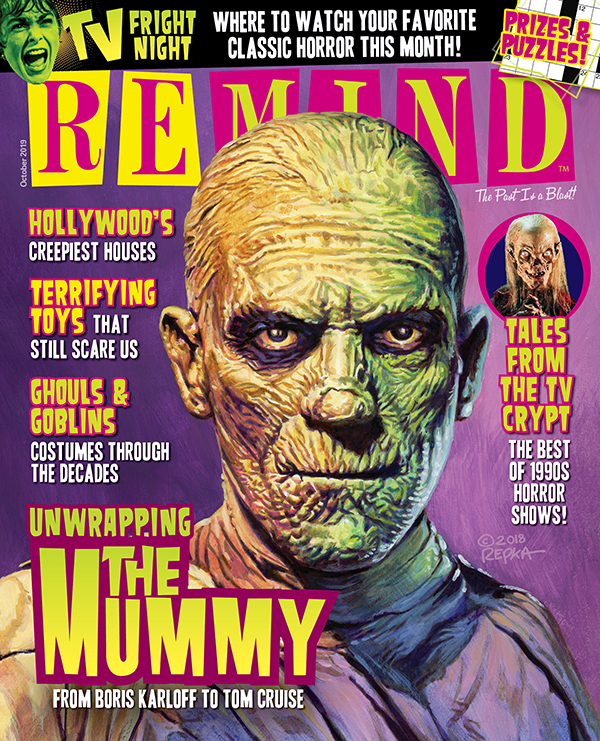
The Mummy
October 2019
Cinematic history of the bandaged monster, from the 1932 Universal classic starring Boris Karloff featuring an incredible cover by artist Ed Repka!
Buy This Issue
